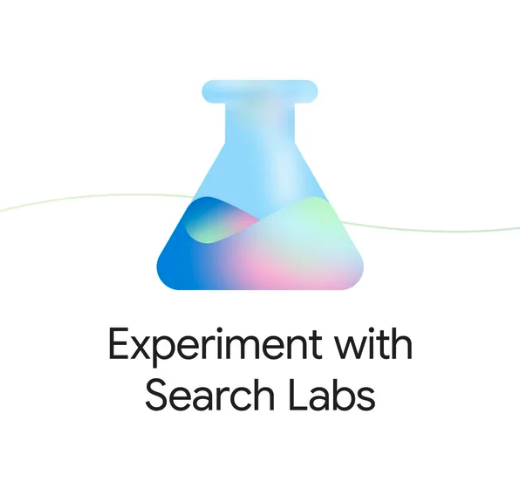
24 Jul Google’s New AI Search Experience: The Good, The Bad, & How to Adapt
Artificial intelligence (AI) is having its coming-of-age moment, as more machine-learning tools become widely available to web users. This season’s shiny new object is Google Search Generative Experience (SGE), currently available to testers in the U.S.
What is SGE and what does it mean for consumers and marketers? Will paid ads and organic search results take a hit? Will users migrate over to one-stop, AI-generated answers instead of scrolling links for the most relevant information?
Search Generative Experience: What and How?
Simply put, Google Search Generative Experience uses machine learning, trained off of massive amounts of internet content, to generate a relevant response. Instead of typical ad-based and organic keyword links to choose from, SGE provides a generated response as an overview paragraph that answers the query directly. See the example below.

According to experts at Medium, SGE is “like ChatGPT for your search engine.” Results include options to “ask a follow-up,” “people also asked” queries, and links to a few sources used to create the summary. The Search Engine Results Pages (SERPs), including Search ads, are listed below the SGE-generated results.
Currently, SGE is available only in the U.S. on Chrome desktop and in the Google app for both Android and iOS users. You can sign up with Search Labs to experiment with the new tool and provide feedback; or look for the beaker icon on your Google search homepage.
Google calls SGE a “new era in Search,” as they take “more of the work out of searching, so you’ll be able to understand a topic faster, uncover new viewpoints and insights, and get things done more easily.” But at what cost to users and marketers? Keep reading.
Potential Problems with SGE
Bloggers, digital marketers, and experts are rightly nervous about a significant drop in traffic if users increasingly rely on SGE results. Click-through-rates, ecommerce sales, and brand awareness could suffer. Across the blogosphere, top concerns with SGE include:
- Results that favor publishers as sources: Testers at Search Engine Journal found: ”Most AI-powered overviews included information from three to five publisher websites instead of the official website or social profiles for the topic at hand. While this could help increase traffic for publishers, it may decrease traffic for brand-owned properties.” See their extensive comparisons of 12 SGE overview results.
- Limited results that are biased, simplistic, or incomplete: Machines have limitations, including the lack of a moral compass, and users continue to be cautious about the validity of results and the breadth of sources. Google assures a “responsible and deliberate approach” with a high bar for quality and important guardrails. Some source links are provided, but not linked to exact data points.
- Too slow and too cluttered: SGE’s wait time is a “deal-breaker,” says expert Jay Peters at The Verge, noting the time wasted, along with the quality of results compared to a typical Google search, isn’t worth the hassle. While Google searches are almost instant, the few seconds it takes for SGE to “think” tempts you to simply scroll past the AI “container” to find what you’re looking for.
AI Search Can Make You a Better Marketer
We previously explored how Bard and ChatGPT can help you brainstorm marketing ideas, acting as a time-saving virtual assistant for your content creation. On the flip side, AI-generated search might make you feel like you’re at the mercy of the machines.
“Now’s not the time to panic,” says Mat Threadgill of The Threadgill Agency “But it is time to pivot once again as AI-powered results could impact your reach and your sales.”
The good news — there are some things robots simply can’t do. While AI search offers simple answers, they can’t lend your voice directly to your customers. The nature of AI is conversational, but you’re the one having those conversations day-in and day-out with your people.
Our top tips for navigating SGE and new AI-search landscape include:
- Go deeper to create high-quality, multi-layered content. Address complex topics with data, research, and in-depth analysis that AI can’t capture.
- Dig in with long-tail keywords. Take time to invest in keyword analytics to hone in on specific customer questions. Cover subtopics or different angles of the same question. For example, create a blog post that addresses both “Why you should buy a new construction home” and “Reasons to buy a home in an established neighborhood.” But as a caution, don’t unnecessarily stuff multi-layered topics into a single post if it’s not relevant for your audience.
- Supplement your content. Use quality images, videos, and personal testimonials. Be conversational, as most queries are.
Finally, you are providing value and expertise that can’t be replicated. The depth and quality you offer leads to more customer engagement, reader questions/answers, comments, and shares — and as a result, higher visibility and sales.
Contact The Threadgill Agency if you want to break through the new digital marketing landscape to reach your people.
